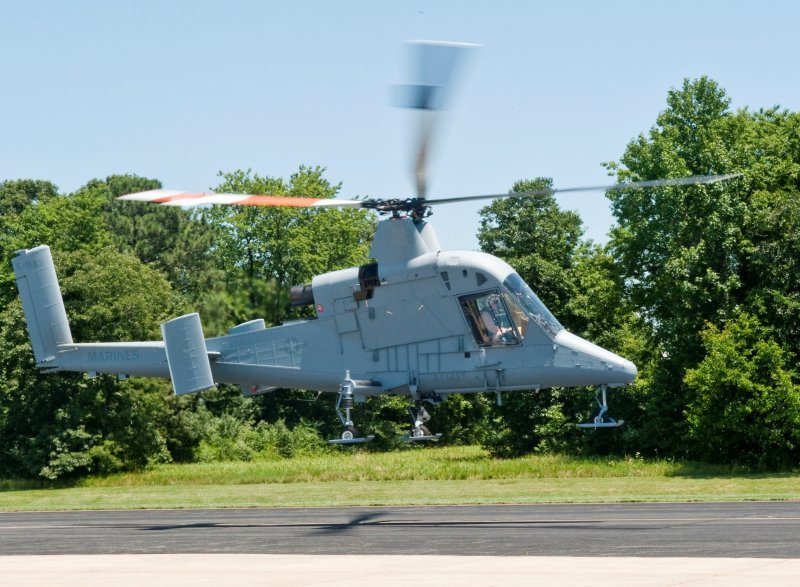The Navy and Marine Corps announced Oct. 5 its plan to deploy the service’s first cargo unmanned aircraft system to Afghanistan next month.
Adm. Bill Shannon, program executive officer for Unmanned Aviation and Strike Weapons, approved Lockheed Martin/Kaman’s K-MAX unmanned helicopter for a six-month deployment to augment Marine Corps ground and air logistics operations.
“I am very excited to deploy a system that will keep our Marines and Sailors out of harm’s way and ultimately save lives,” said Shannon.
Prior to Shannon’s decision last week, Commander Operational Test and Evaluation Force released a report documenting the system’s favorable performance during a quick reaction assessment in Yuma, Ariz., in August. Marine Unmanned Aerial Vehicle Squadron (VMU) 1, Cargo Resupply Unmanned Aircraft System (CRUAS) Det. conducted the QRA, which replicated a week in the life of operations in Afghanistan with temperatures, flight profile and terrain almost identical to those planned for deployment.
“Coming out to test and field K-MAX has been one of the most exciting opportunities of my career,” said Staff Sgt. Marc Cox, an air vehicle operator (AVO) from the detachment. “We are literally the tip of the spear in terms of the development and advancement of this particular cargo UAS and all future unmanned rotary wing systems.”
Results from the QRA confirmed that K-MAX exceeded the Navy and Marines’ requirement to carry 6,000 pounds of cargo per day over a five-day period. The system carried a total of 33,400 pounds of cargo during the assessment period, with nearly 3,500 pounds delivered in a single mission.
“K-MAX has the capability to deliver a tremendous amount of cargo over the course of the deployment,” said Maj. Kyle O’Connor, VMU-1 CRUAS Det. officer in charge. “We witnessed firsthand its ability to carry multiple loads to separate locations in a single sortie without being affected by harsh conditions.”
Test coordinators developed scenarios that would demonstrate the system’s ability to operate in severe conditions. For example, K-MAX flew one mission in a dusty zone, similar to the Afghan environment. The successful mission validated the system’s auto drop function, proving the aircraft’s ability to deliver cargo at any location.
According to O’Connor, personnel could not see the K-MAX during this dusty zone mission due to the “brown out” conditions in the zone, but the cargo could still be delivered safely and accurately. This auto drop capability was used during many of the missions flown throughout the week.
“We successfully completed all missions and reacted to challenging scenarios,” O’Connor said. “The team worked through any issues or obstacles that surfaced and had both aircraft ready for operations at the start of each day.”
O’Connor is confident the deployment will be a success if the system operates as well as it did during its assessment. He will lead the Marine detachment in Afghanistan next month along with Lockheed Martin contractors, many of whom have prior military experience.
The majority of personnel will operate two K-MAX helicopters from a central main operating base. AVOs will reside at smaller forward operating bases, where cargo will be delivered.
“Most of the missions will be conducted at night and at higher altitudes,” said Marine Capt. Caleb Joiner, mission commander. “This will allow us to keep out of small arms range.”
The detachment is excited to bring this groundbreaking capability into theater.
“Every time this aircraft delivers a payload, we’re taking one more truck off the road,” said Cpl. Ryan Venem, Det. AVO. “That’s our goal, reducing IED (improvised explosive device) strikes and taking convoys off the roads.”









